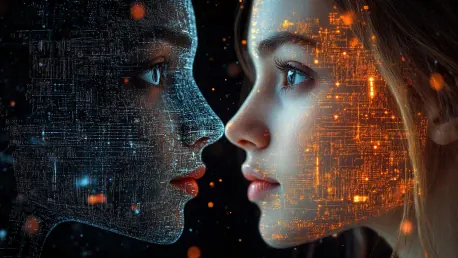In the ever-evolving world of artificial intelligence, DALL-E stands out as a fascinating innovation, capable of converting text descriptions into images. Developed by OpenAI, DALL-E leverages Natural Language Processing (NLP) to understand and interpret user-provided text commands, generating images that align with these inputs. This AI technology enables users to create highly detailed and imaginative visuals simply by typing out descriptions, offering a powerful tool for anyone, regardless of their artistic ability. As we delve deeper into the capabilities and implications of DALL-E, it becomes evident that this AI has the potential to democratize creativity, making it accessible to a broader audience. Moreover, DALL-E’s ability to produce unique and creative images opens new doors for social media campaigns, marketing, and various other fields that rely heavily on visual content.
The Mechanics Behind DALL-E
DALL-E operates using Natural Language Processing to understand the text it receives, making it an advanced form of artificial intelligence capable of converting words into meaningful images. The process begins when the user provides a text description. DALL-E then analyzes the words, phrases, sentence structures, and nuances within the command, using its NLP capabilities to comprehend the user’s intent fully. This understanding is crucial for generating images that accurately reflect the user’s vision.
Once the text input is processed, DALL-E employs Generative Neural Networks to create corresponding images. These neural networks are trained on extensive datasets containing pairs of text and images, enabling DALL-E to learn the relationships between different types of commands and visual representations. This training allows the AI to generate images that range from realistic depictions of everyday objects to more abstract or imaginative creations. The key to achieving precise results lies in the clarity of the user’s input—the more detailed and specific the command, the closer the generated image will align with the intended outcome.
Applications and Advantages
The introduction of DALL-E has significant implications across various sectors, offering numerous advantages that can transform how individuals and organizations approach image creation. One of the primary benefits is the democratization of creative ideas. With DALL-E, people who lack artistic skills can still bring their visions to life. This democratization bridges the gap between creativity and technical skill, allowing everyone to express their ideas visually.
Moreover, DALL-E has applications in numerous industries, from marketing and advertising to education and entertainment. Marketers can use DALL-E to create unique visuals for campaigns, while educators might develop custom illustrations for teaching materials. In entertainment, DALL-E can assist in designing elements for video games or animations, offering a versatile tool that enhances creative processes. Additionally, the time efficiency provided by DALL-E is invaluable. Art creators can brainstorm and generate visual concepts more quickly, freeing up time for other aspects of their projects. This efficiency is especially beneficial in fast-paced environments where rapid content creation is essential.
Challenges and Concerns
Despite its many advantages, DALL-E is not without its challenges and potential drawbacks. One significant issue is the AI’s limitations in understanding context. While DALL-E’s NLP capabilities are advanced, they are not perfect. The AI can sometimes misinterpret user commands, leading to images that do not fully capture the intended context. This limitation necessitates precise and clear input from users to achieve the best results.
Another concern revolves around copyright issues. Although images created by DALL-E are typically unique and have watermarks, questions about copyright ownership remain. Who owns the rights to an image generated by an AI? This ambiguity could lead to legal complications, particularly for commercial use. Additionally, there is the potential for abuse. The ability to create any image on command makes DALL-E vulnerable to misuse, such as generating malicious or inappropriate content. Addressing these ethical considerations is crucial to ensuring that the technology is used responsibly and benefits society as a whole.
Future Directions and Implications
As we reflect on the current capabilities and limitations of DALL-E, it becomes clear that this technology has already made significant strides in transforming how we create and interact with images. However, the journey is far from over. Future advancements in artificial intelligence and machine learning could further enhance DALL-E’s abilities, improving its understanding of context and making it even more reliable and versatile. Researchers and developers could focus on refining the AI’s NLP algorithms to minimize misinterpretations of user commands. Additionally, developing stricter guidelines and regulatory frameworks could help address the ethical and legal issues associated with AI-generated content, ensuring a balanced and fair usage landscape.
Expanding the datasets used to train DALL-E could also lead to more diverse and inclusive image outputs. By incorporating a broader range of cultural and contextual references, DALL-E could better serve a global audience, making the technology more applicable across different regions and demographics. Moreover, collaboration with artists, educators, and industry professionals could spur innovative applications and drive the development of new features, thereby pushing the boundaries of what DALL-E and similar AI technologies can achieve.
In conclusion, DALL-E represents a remarkable leap forward in artificial intelligence, offering an unprecedented way to transform text into unique and creative images. The AI’s ability to democratize creativity and its applications across various sectors highlight its immense potential. Although challenges such as understanding context, copyright issues, and the potential for misuse remain, ongoing advancements and ethical considerations could pave the way for a more refined and responsible use of this transformative technology. As we continue to explore the capabilities of DALL-E, it is exciting to envision the many ways it could shape the future of digital creativity.









